Supply and demand forecasting is a crucial component of any business that deals with inventory management. In today's fast-paced and competitive market, businesses need to be able to anticipate changes in demand and supply in order to optimize their operations and remain profitable. Fortunately, advancements in Artificial Intelligence (AI) technology have made it possible to make more accurate and informed predictions about the future of supply and demand.
AI tools use sophisticated algorithms to analyze historical data, identify patterns and trends, and provide real-time insights into market conditions. By leveraging these tools, businesses can make better decisions about their inventory levels, reduce wastage, improve customer satisfaction, and ultimately increase their profitability. In this blog, we will explore some of the best AI tools available for supply and demand forecasting, and discuss how they can be used to enhance your business operations.
DataRobot
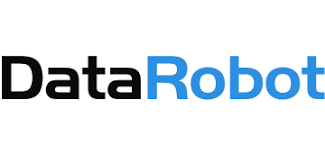
DataRobot is an AI tool that automates the end-to-end process of building, deploying, and maintaining machine learning models. It offers a user-friendly interface that allows users to import data, select a target variable, and choose from over 100 pre-built algorithms to create accurate models quickly. DataRobot also provides model explanation and interpretation tools, allowing users to understand how models make predictions. With its automated machine learning capabilities, DataRobot significantly reduces the time and effort required to build and deploy predictive models, making it an ideal tool for organizations looking to accelerate their data science initiatives.
Pros
Cons
Overall Rank
IBM Watson Studio

IBM Watson Studio is an AI tool that provides a collaborative environment for building and training machine learning models. It allows users to create projects, access data, and collaborate with team members in a single workspace. With its drag-and-drop interface, users can easily import data, select the algorithm, and build models without requiring any coding skills. The platform also provides a range of tools for data exploration and visualization, making it easy to gain insights from data. Furthermore, it offers robust security features to protect sensitive data and comply with industry regulations.
Pros
Cons
Overall Rank
Alteryx

Alteryx is a powerful AI tool that simplifies the process of data preparation, blending, and analysis, allowing users to derive insights from their data without needing to write complex code. With Alteryx, users can easily build predictive models and perform complex statistical analyses using a simple drag-and-drop interface. This AI tool also offers a range of data visualization tools that help users to create compelling visualizations that can be easily shared with stakeholders. Additionally, Alteryx allows users to automate their workflow and schedule data refreshes, ensuring that insights are always up-to-date and relevant.
Pros
Cons
Overall Rank
RapidMiner

RapidMiner is an easy-to-use, open-source predictive analytics software that allows users to build predictive models quickly and easily. It offers a range of tools for data preparation, feature engineering, model building, and model deployment. RapidMiner's drag-and-drop interface allows users to build models without any programming knowledge, and its powerful algorithms and data visualization tools enable users to analyze complex data sets with ease. Additionally, RapidMiner supports a wide range of data sources, including Excel, CSV, and SQL databases, making it a versatile tool for data analysis.
Pros
Cons
Overall Rank
Azure Machine Learning

Azure Machine Learning is a powerful cloud-based tool that provides a robust platform for building, training, and deploying machine learning models. With its intuitive drag-and-drop interface and pre-built templates, users can easily build and deploy machine learning models with little or no coding experience. Azure Machine Learning also offers a wide range of tools for data preparation, including feature engineering and data visualization. Additionally, it provides several options for training models, such as automated machine learning, which can help to optimize and fine-tune models for accuracy and performance. With its ability to scale up or down, users can easily train models on large datasets, making it suitable for use in a wide range of applications, from image recognition to predictive analytics.
Pros
Cons
Overall Rank
Google Cloud AutoML
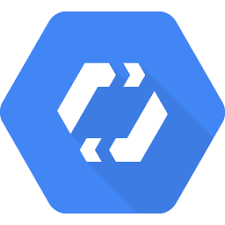
Google Cloud AutoML is a suite of machine learning tools that allows businesses and developers to create custom AI models without requiring extensive programming knowledge or data science expertise. This tool provides a user-friendly interface that enables users to build custom models by simply uploading their own data, selecting the desired algorithm, and training the model. With AutoML, businesses can create highly accurate models that can be used for various applications such as natural language processing, image and video recognition, and predictive analytics. Additionally, AutoML's ability to automatically optimize models based on user data allows businesses to save significant time and resources that would otherwise be spent on manual model optimization. Overall, Google Cloud AutoML is a powerful and accessible tool for businesses looking to incorporate machine learning into their operations.
Pros
Cons
Overall Rank
H2O.ai
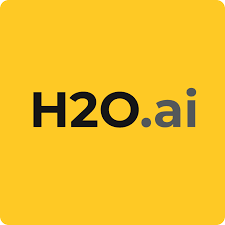
H2O.ai is an open-source artificial intelligence (AI) platform that provides a comprehensive suite of tools and algorithms for data scientists, developers, and business analysts. The platform offers various products, including H2O Driverless AI, H2O Sparkling Water, and H2O.ai Deep Water, which enable users to build and deploy machine learning models, deep learning models, and predictive analytics solutions with ease. H2O.ai also provides pre-built machine learning models and APIs that can be integrated into any application. With its user-friendly interface, H2O.ai makes it easy for users to explore, visualize, and analyze their data, enabling them to gain insights and make data-driven decisions.
Pros
Cons
Overall Rank
SAP Analytics Cloud
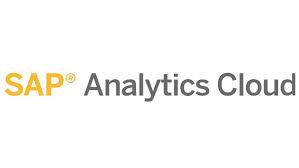
SAP Analytics Cloud AI tool is a powerful business intelligence and analytics solution that leverages artificial intelligence to deliver advanced insights and predictions. With features such as smart data discovery, predictive analytics, and machine learning capabilities, SAP Analytics Cloud AI helps organizations to quickly identify trends, patterns, and outliers in their data and make data-driven decisions. The platform also offers collaborative planning and simulation capabilities, allowing teams to create and share business models and scenarios in real-time.
Pros
Cons
Overall Rank
SAS Forecast Server
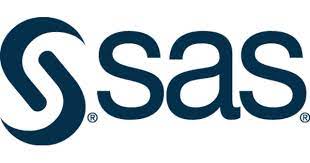
SAS Forecast Server is an AI-powered software tool designed to help businesses generate more accurate forecasts and make data-driven decisions. The tool offers a wide range of features such as automated forecasting, model selection, and data visualization, making it an all-in-one solution for forecasting needs. With its advanced algorithms and machine learning techniques, SAS Forecast Server can help organizations analyze historical data and identify patterns, seasonality, and trends to predict future outcomes. It also provides real-time monitoring capabilities and the ability to adjust forecasts based on changing market conditions. This makes it an essential tool for businesses looking to stay ahead of the curve and make informed decisions.
Pros
Cons
Overall Rank
TIBCO Spotfire

TIBCO Spotfire is an intuitive data visualization and analytics platform that incorporates artificial intelligence and machine learning capabilities to help users make informed decisions. With its interactive dashboards and customizable features, users can easily explore complex data sets, identify trends, and predict future outcomes. Spotfire's AI-powered recommendations engine provides insights and suggestions for data modeling and visualization, enabling users to quickly and efficiently create interactive dashboards and reports. Its robust data connectivity capabilities allow users to easily integrate data from various sources, including cloud-based applications, databases, and spreadsheets. Spotfire's advanced analytics capabilities, coupled with its user-friendly interface, make it a valuable tool for businesses and organizations looking to derive meaningful insights from their data.
Pros
Cons
Overall Rank
Tableau

Tableau AI is an advanced analytics tool that leverages artificial intelligence and machine learning algorithms to help users gain insights from their data. With Tableau AI, users can explore and analyze their data with ease, creating dynamic and interactive dashboards that enable them to visualize complex data sets in a simple and intuitive way. The tool offers a wide range of features, including automated data modeling, natural language processing, and predictive analytics, that make it easier for users to identify patterns, trends, and anomalies in their data. Additionally, Tableau AI offers seamless integration with other popular tools and platforms, making it a versatile and powerful tool for data analysis and visualization.
Pros
Cons
Overall Rank
Microsoft Power BI

Microsoft Power BI is a powerful business intelligence tool that leverages artificial intelligence to help users visualize and analyze data in an intuitive and insightful way. With Power BI, users can connect to various data sources, create interactive reports and dashboards, and share their insights with others. The AI capabilities of Power BI include automated data modeling, natural language processing, and machine learning, which help users to gain deeper insights from their data without requiring a lot of technical knowledge. The tool also includes a wide range of pre-built connectors, visuals, and templates, which makes it easy to get started quickly and to create professional-looking reports and dashboards.
Pros
Cons
Overall Rank
Amazon Forecast

Amazon Forecast is an AI-powered tool that utilizes machine learning to provide highly accurate forecasts for time-series data. This tool is designed to help businesses improve their planning and decision-making processes by predicting future demand, sales, and inventory levels. With Amazon Forecast, businesses can easily create custom models based on their historical data, and adjust the forecasts as new data becomes available. The tool uses algorithms to identify patterns and trends in the data, and generates forecasts with high accuracy, making it a valuable tool for businesses that rely on accurate predictions for their planning and operations.
Pros
Cons
Overall Rank
Forecast Pro

Forecast Pro AI is an advanced forecasting tool that utilizes machine learning and artificial intelligence algorithms to provide accurate predictions of future trends and patterns. With its user-friendly interface and powerful analytical capabilities, Forecast Pro AI enables businesses to make informed decisions and plan for the future with confidence. The tool offers a range of features including automated forecasting, intuitive visualizations, and customizable reporting options. Additionally, it allows users to import data from various sources, perform advanced statistical analysis, and collaborate with team members. Forecast Pro AI is an invaluable tool for businesses looking to optimize their operations, increase efficiency, and stay ahead of the competition.
Pros
Cons
Overall Rank
GMDH Shell
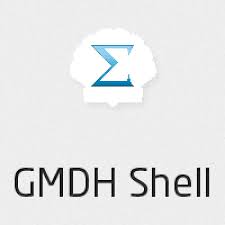
GMDH Shell is an innovative AI tool that utilizes the group method of data handling (GMDH) algorithm to perform data analysis and forecasting. It is an excellent choice for researchers, scientists, and analysts who require an efficient and flexible tool to perform predictive modeling, optimization, and data mining. GMDH Shell has a user-friendly interface that simplifies data preprocessing, model building, and results interpretation. The tool's unique feature is its ability to automatically create and compare multiple models to identify the most accurate one. GMDH Shell is versatile and can handle different data types, including numerical, categorical, and time-series data. Additionally, it offers advanced modeling techniques such as neural networks and evolutionary algorithms that can handle complex and nonlinear relationships. With GMDH Shell, users can obtain actionable insights, make better decisions, and improve their operations' efficiency.
Pros
Cons
Overall Rank
Neural Designer
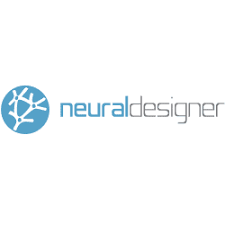
Neural Designer is an AI tool that uses advanced machine learning algorithms to analyze data and build predictive models. With a user-friendly interface and drag-and-drop functionality, Neural Designer makes it easy for businesses and data scientists to create accurate and effective models without the need for extensive coding knowledge. The software includes features such as automatic data normalization, feature selection, and model selection to ensure that the resulting models are accurate and robust. Additionally, Neural Designer offers a range of visualization tools to help users better understand their data and models, making it an excellent choice for businesses that want to leverage the power of machine learning to improve their decision-making processes.
Pros
Cons
Overall Rank
FICO Xpress Insight

FICO Xpress Insight is an advanced analytics tool that utilizes artificial intelligence to solve complex optimization and predictive modeling problems. With its user-friendly interface, users can quickly create and deploy decision models using a wide range of techniques, including linear and nonlinear programming, stochastic programming, and machine learning. FICO Xpress Insight also provides real-time data visualization and simulation capabilities, allowing users to analyze and experiment with different scenarios to make informed decisions. Moreover, the tool's built-in optimization algorithms enable users to identify the optimal solutions to complex business problems quickly. Whether it's for resource allocation, risk management, or pricing optimization, FICO Xpress Insight provides a comprehensive suite of features to help organizations make data-driven decisions.
Pros
Cons
Overall Rank
Minitab

Minitab AI is a powerful tool that leverages machine learning algorithms to help businesses streamline their data analysis processes. With its intuitive interface and easy-to-use features, Minitab AI allows users to quickly and accurately analyze large data sets and generate insights that can drive better decision-making. The tool offers a range of advanced statistical analysis tools, including regression analysis, time series analysis, and clustering, making it ideal for businesses that need to perform complex data analysis tasks. Additionally, Minitab AI integrates with other popular data analysis tools like Excel, allowing users to easily import and export data.
Pros
Cons
Overall Rank
Oracle Advanced Analytics
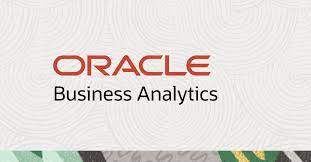
Oracle Advanced Analytics is a powerful AI tool that enables businesses to harness the power of machine learning and data mining for predictive analytics. With this tool, businesses can uncover hidden insights in their data and make more informed decisions that can drive growth and profitability. Oracle Advanced Analytics offers a wide range of capabilities, including predictive modeling, data mining, and statistical analysis, all of which can be easily integrated into existing business workflows. Additionally, it comes with pre-built machine learning algorithms that can be used to solve a wide range of business problems, from customer churn prediction to fraud detection. With Oracle Advanced Analytics, businesses can gain a competitive edge by leveraging the power of AI to make smarter decisions.
Pros
Cons
Overall Rank
In conclusion, the demand and supply forecasting is crucial for businesses to operate effectively and efficiently in today's fast-paced and dynamic market. The use of artificial intelligence (AI) tools has revolutionized this field, making it possible for businesses to make more accurate and informed decisions about their future operations. AI tools help in predicting the demand and supply trends based on historical data and real-time market conditions, enabling businesses to anticipate customer needs and optimize their supply chain. Some of the best AI tools available for demand and supply forecasting include Machine Learning algorithms, Neural Networks, and Deep Learning models. These tools are designed to analyze large amounts of data and identify patterns and trends that might be missed by traditional forecasting methods. Moreover, they can adapt to changes in the market and improve their accuracy over time. By incorporating these AI tools into their forecasting processes, businesses can reduce their inventory costs, minimize wastage, improve customer satisfaction, and boost overall profitability. Therefore, it's crucial for businesses to leverage the power of AI in their supply and demand forecasting processes to stay competitive in today's ever-changing market.
